Keynote Forum
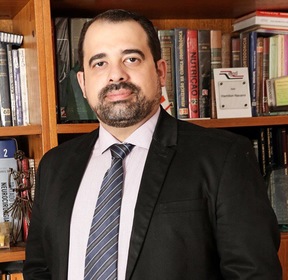
Hamilton Navarro Jr
University of Cidade de Sao Paulo- UNICID BrazilTitle: The role of L-PRF and derivatives in maxillary reconstructive surgeries for dental implants
Abstract:
One of implantology’s biggest challenges is the tissue maintenance, reparation and formation aiming the success and longevity of clinical cases. Among several tissue and bone grafts regeneration techniques described in literature, the use of L-PRF membranes has gotten notoriety in implantology. Our group in a recent research studied the expression of vascular endothelial growth factor (VEGF) during the healing process of rats’ subcutaneous tissue with or without the presence of L-PRF membrane. It has been selected 12 rats (Rattus Norvegicus Albinus) and divided in 3 groups according to sacrifice time - 5/15/30 days (G5/G15/G30), considering that one rat’s blood of each group has been collected to produce L-PRF membranes according to Choukroun’s protocol 2. It has been made two bone defects, not critical, in both sides of rat’s skullcap median sagittal suture, using a 2mm thickness drill trephine, after that the defects were filled in the right side with L-PRF and in the left side with clot. In times 5/15/30 days after the surgical procedures and euthanasia, the fragments were prepared to immuno-histochemical analyses. The VEGF expression was analyzed by assessment of cellular positive, scoring between 0 and 3 graduations, meaning 0 less than 10% of presence, 1 between 10 and 25% and 3 above 50% of positivity. The VEGF had been present in the initial phase and during all the tissue repair process in both groups. In five days, there weren’t any VEGF’s immunotaining difference between both groups. The use of L-PRF membrane reduces the VEGF’s expression in 15 and 30 days groups when they are compared to control group. In the line of our work, at the presentation, the blood concentrate preparation protocols will be presented along with clinical cases performed by the author.
Biography:
Hamilton Navarro Jr. graduated in Dentistry in 2001 at the University of Guarulhos, Brazil. He was an assistant at the Oral and Maxillofacial Surgery service at the University of Sao Paulo, School of Medicine. He is specialized in Dental Prosthesis at the University of São Paulo, School of Dentistry, in Dental Implant at the Mozarteum University of Sao Paulo and in Oral and Maxillofacial Surgery at Associacao Brasileira de Odontologia de Sao Paulo, Brazil. He holds a Masters in Implantology from Faculty of Sao Leopoldo Mandic, Campinas, Brazil, obtained in 2016. In 2018 he attended a fellow course in Oral and Maxillofacial Surgery and Advanced Implantology, at University of Gothenburg, Sweden. He is a professor at postgraduate courses at University of Cidade de Sao Paulo (UNICID), teaching Implantology and Oral and Maxillofacial Surgery. He also lectures as a visiting professor in Oral and Maxillofacial Surgery and Traumatology, Implant Dentistry, and Dental Prosthesis at renowned educational institutions. He has worked as a clinical director and principal surgeon for 11 years at Oral Rehabilitation Institute, São Paulo, Brazil, and he has also had his private practice for 18 years. Hamilton works also as traumatology surgeon in hospitals in Sao Paulo.
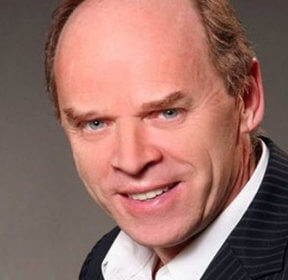
Mark Bonner
International Institute of Periodontology CanadaTitle: Reassessing the role of Entamoeba gingivalis in periodontitis
Abstract:
The protozoan Entamoeba gingivalis resides in the oral cavity and is frequently observed in the periodontal pockets of humans and pets. This species of Entamoeba is closely related to the human pathogen Entamoeba histolytica, the agent of amoebiasis. Although E. gingivalis is highly enriched in people with periodontitis (a disease in which inflammation and bone loss correlate with changes in the microbial flora), the potential role of this protozoan in oral infectious diseases is not known. Periodontitis affects half the adult population in the world, eventually leads to edentulism, and has been linked to other pathologies, like diabetes and cardiovascular diseases. As aging is a risk factor for the disorder, it is considered an inevitable physiological process, even though it can be prevented and cured. However, the impact of periodontitis on the patient's health and quality of life, as well as its economic burden, are underestimated. Commonly accepted models explain the progression from health to gingivitis and then periodontitis by a gradual change in the identity and proportion of bacterial microorganisms in the gingival crevices. Though not pathognomonic, inflammation is always present in periodontitis. The recruitment of leukocytes to inflamed gums and their passage to the periodontal pocket lumen are speculated to fuel both tissue destruction and the development of the flora. The individual contribution to the disease of each bacterial species is difficult to establish and the eventual role of protozoa in the fate of this disease has been ignored. Following recent scientific findings, we discuss the relevance of these data and propose that the status of E. gingivalis be reconsidered as a potential pathogen contributing to periodontitis.
Biography:
Mark Bonner highlights the painful ignorance of people with periodontal disease. Author, lecturer, trainer and practitioner, Dr. Bonner has devoted his career to the prevention and treatment of periodontal disease. The result of practical experience and also of associations with research centres, Dr. Bonner has perfected a gentle technique, without surgery, to cure cases of periodontitis, with exceptional results. More than 1,000 practitioners worldwide attended Dr. Bonner’s Periodontal Health seminar.
Speakers
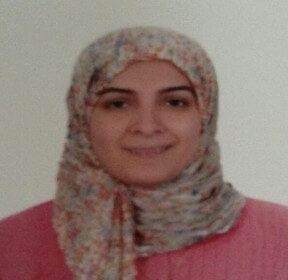
Mona M Aboelnagga
Taibah University Saudi ArabiaTitle: The effect of dental prosthetic management of diabetic patients on their quality of life: Observational cross-sectional study
Abstract:
Diabetic patients usually suffer from a high prevalence of oral complications including xerostomia. In addition, periodontal disease can lead eventually to tooth loss if untreated. Oral health related quality of life (OHRQL) in diabetic patients is an important issue considering the interaction between diabetes and oral health problems. In this research, the objective is to discover and evaluate the role of the removable prosthesis on improving patients’ OHRQL in Al-Madinah Al-Munawarah. This is an Observational cross-sectional descriptive retrospective study. The sample was collected from faculty of Dentistry clinics at Taibah University using multi-stratified random sample. The sample selected was diabetic patients wearing removable partial or complete dentures. The sample size was conducted by estimating the population number (sample size = 80 patients). 80 questionnaires have been spread among 80 patients, 71 have been responded. This study included diabetic patients who received removable dental prosthesis only (even if prosthesis has been done in Taibah University clinics or elsewhere). 71 patients were collected from Taibah University Dental College (TUDC) clinics in Al Madinah Al-Munawarah. 39 (92.9%) of patients wearing complete dentures and 28 (96.6%) of patients wearing partial dentures were satisfied regarding esthetic. Thirty-five (83%) of patients wearing complete dentures and 24 (82,8%) of patients wearing partial dentures were satisfied regarding improvement of speech. Patients wearing complete dentures were 35 (83,8%) compared to 19 (65.5%) of whom wearing partial dentures were satisfied regarding improvement of eating. 100 % of the patients who had their denture since 1-3 years are satisfied about esthetic. The satisfaction of eating among patients who had their dentures for more than 3 years is 81.5 %. Within the limitations of this study it was found that: 1) Diabetic patients, whether wearing partial or complete dentures, were satisfied with their prosthesis in esthetics, speaking and eating. 2) Regarding duration of wearing, their satisfaction wasn’t changed regarding eating and speech, but decreased in esthetic.
Biography:
Mona M Aboelnagga is an Associate Professor of Prosthodontics, Prosthodontic Department, Faculty of Dentistry. Ain Shams University, Egypt and is visiting as Associate Professor College of Dentistry, Taibah University, Saudi Arabia. She had M.SC. (2006) and Ph.D. (2011) Of Oral and Maxillofacial Prosthodontics from Ain Shams University. She is a “Prosthodontic consultant” in Saudi commission for health specialties (SCHS), she is TOT certified practitioner (Ain Shams university 2017). She is MBTI certified practitioner. She is reviewer in Macdonian Medical science Journal, associative editor in Journal of Biomedical Science (Department of Dentistry and Endodontics) and editor in SAODS (Scientific Archives of Dental Sciences). She was a speaker at several dental and medical conferences and shared in workshops and lectures in continuous dental education Faculty of Dentistry, Ain Shams University. She has published several research articles in various national and international dental Journals. She has shared in publishing A dental terminology book. She supervised several researches of postgraduate studies at Ain Shams and students’ teams at Taibah universities. And has experience in teaching oral and maxillofacial prosthodontics and implantology for undergraduate dental students and postgraduate residents
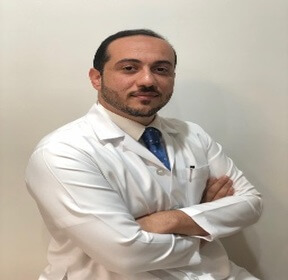
Mustafa Ali Aldajani
Dammam Medical Complex Saudi ArabiaTitle: CBCT as a new approach for diagnosis of Invasive Cervical Resorption (ICR)
Abstract:
The reason behind presenting this topic is they have noticed in the recent years we have seen a growth in research in the area of CBCT. There is an increasing optimism that CBCT used in dentistry will bring significant advances in the diagnosis, treatment and prognosis of disease as well. The electronic database chosen for developing this review was PubMed database. Following keywords were used for searching relevant papers: (CBCT – invasive cervical resorption – external resorption). A total of 20 papers were retrieved from the PubMed database, out of which only 8 papers were chosen. CBCT is considered a complementary modality for specific applications rather than a replacement for 2-D imaging modalities (Scarfe et al 2009). CBCT in endodontics is demonstrates anatomic features in 3 dimensions that intraoral and panoramic images cannot (AAE Summer 2011). CBCT provided valuable information that assisted in the determination of the type of resorptive defects (internal, external and invasive cervical) (Grondahl HG 2004). Invasive cervical resorption is an insidious and often aggressively destructive form of external root resorption that is characterized by invasion of the cervical region of the root by fibrovascular tissue derived from the periodontal ligament (below epithelial attachment of the tooth). Conventional intraoral radiographic techniques reveal information in 2 dimensions only (height and width), Valuable and relevant information in the 3rd dimension (depth) is limited. CBCT imaging appears to provide a superior validity and reliability in the detection of ICR. The superior accuracy of CBCT may help to determine ICR exact location and extents.
Biography:
Mustafa Ali Aldajani is an Endodontist by profession and works with one of the government hospitals in Dammam, Saudi Arabia. He holds a BDS in Dentistry and MSc in Oral science and Clinical certificate in Endodontics, University of Riyadh Elm. Mustafa has 4 years of experience as general practice of Dentistry and 2 years of government practice as an Endodontist. He has also been involved in many researches at Dammam Medical Complex.

Mona M Aboelnagga
Taibah University Saudi ArabiaTitle: Oral rehabilitation of sever periodontitis patient with immediate partial dentures: A case report
Abstract:
Diabetic patients usually suffer from a high prevalence of oral complications including xerostomia. In addition, periodontal disease can lead eventually to tooth loss if untreated. Oral health related quality of life (OHRQL) in diabetic patients is an important issue considering the interaction between diabetes and oral health problems. In this research, the objective is to discover and evaluate the role of the removable prosthesis on improving patients’ OHRQL in Al-Madinah Al-Munawarah. This is an Observational cross-sectional descriptive retrospective study. The sample was collected from faculty of Dentistry clinics at Taibah University using multi-stratified random sample. The sample selected was diabetic patients wearing removable partial or complete dentures. The sample size was conducted by estimating the population number (sample size = 80 patients). 80 questionnaires have been spread among 80 patients, 71 have been responded. This study included diabetic patients who received removable dental prosthesis only (even if prosthesis has been done in Taibah University clinics or elsewhere). 71 patients were collected from Taibah University Dental College (TUDC) clinics in Al Madinah Al-Munawarah. 39 (92.9%) of patients wearing complete dentures and 28 (96.6%) of patients wearing partial dentures were satisfied regarding esthetic. Thirty-five (83%) of patients wearing complete dentures and 24 (82,8%) of patients wearing partial dentures were satisfied regarding improvement of speech. Patients wearing complete dentures were 35 (83,8%) compared to 19 (65.5%) of whom wearing partial dentures were satisfied regarding improvement of eating. 100 % of the patients who had their denture since 1-3 years are satisfied about esthetic. The satisfaction of eating among patients who had their dentures for more than 3 years is 81.5 %. Within the limitations of this study it was found that: 1) Diabetic patients, whether wearing partial or complete dentures, were satisfied with their prosthesis in esthetics, speaking and eating. 2) Regarding duration of wearing, their satisfaction wasn’t changed regarding eating and speech, but decreased in esthetic.
Biography:
Mona M Aboelnagga is an Associate Professor of Prosthodontics, Prosthodontic Department, Faculty of Dentistry. Ain Shams University, Egypt and is visiting as Associate Professor College of Dentistry, Taibah University, Saudi Arabia. She had M.SC. (2006) and Ph.D. (2011) Of Oral and Maxillofacial Prosthodontics from Ain Shams University. She is a “Prosthodontic consultant” in Saudi commission for health specialties (SCHS), she is TOT certified practitioner (Ain Shams university 2017). She is MBTI certified practitioner. She is reviewer in Macdonian Medical science Journal, associative editor in Journal of Biomedical Science (Department of Dentistry and Endodontics) and editor in SAODS (Scientific Archives of Dental Sciences). She was a speaker at several dental and medical conferences and shared in workshops and lectures in continuous dental education Faculty of Dentistry, Ain Shams University. She has published several research articles in various national and international dental Journals. She has shared in publishing A dental terminology book. She supervised several researches of postgraduate studies at Ain Shams and students’ teams at Taibah universities. And has experience in teaching oral and maxillofacial prosthodontics and implantology for undergraduate dental students and postgraduate residents
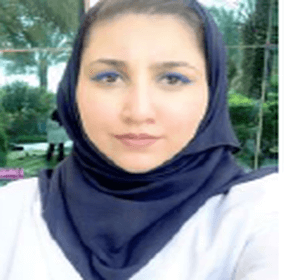
Basma Raza-ur Rahman
Sulaiman Al- Habib Hospital Saudi ArabiaTitle: Emotional dentistry and dental photography for treatment planning
Abstract:
Research says that those of us who are ashamed of our smile are more depressed, with-drawn and lacking in confidence. What if there was a way to give you a smile that made you look great, made others feel more positively towards you, and truly reflected the way you felt? A Smile that reflects the character, soul and style that you want to project to others, traditionally dentists have focused solely on teeth and gums. But emotional dentistry goes much further. Emotional Dentistry is analysing and considering the full face of the patient into the new smile so that it looks natural. We look at the whole person. That’s because we understand one crucial thing: a smile comes from the soul, not from the mouth.
The art of Emotional Dentistry is similar to the skill of an architect, interior designer or sculptor. They understand the universal truths about shape, proportion, and symmetry. About how the arrangement of light, space, and form can either look harmonious and pleasing, or jarring and unnatural. How some shapes can excite us and others can make us feel calm and safe. Another important feature is morphopsychology. The objective of morphopsychology is to establish the links between physical or morphologic appearance and characterological or psychologic particulars. “Facial shapes are a reflection of the life forces that are at work within each individual” (developed in the 1930s by a French psychologist named Louis Corman) concrete and harmonious reflection of the development of thought and spirit should be helpful in understanding the secret nature of these elements. This postulate is the basis for the development of the “science” of morphopsychology, an understanding of which represents one of the means of assessing the personality of our patients. The shape of your teeth says a lot about your personality.
Digital Smile Design (DSD) is a treatment planning protocol that allows for careful analysis of the patient's facial and dental structures through state-of-the-art videography and digital technology. Today, the DSD Concept is considered the most modern, patient-centered design approach available. Dental photography allows the patient to visualize his or her smile and oral condition with the same acute perspective as the dentist, which helps the patient understand the rationale for recommended treatment. Photography has always been considered an invaluable part of dentistry with digital technology; imaging has become easier and more readily accessible. Humans are visual creatures, which is why without good photos it’s hard to sell your patients a case large or small. Photography is an integral part of modern dentistry. Just like taking radiographs to assist us in making diagnoses, dental photography can be an important diagnostic and treatment aid. Dental photography is used for multiple purposes. Recording the baseline situation when seeing a new patient, explaining dental situation to the patients. Creating accurate treatment plans in conjunction with other diagnostic data, Laboratory communication, Marketing your services and personal cases on social media to attract more patients.
The last place one would expect to find design and innovation: The dentist's office. Dental photography used for case presentation to guide patients toward a decision making, use of visual treatment plans, they'll immediately be able to visualize the changes they hope to see. Seeing is believing for many patients. All they know is not Hollywood smile vs. Hollywood smile.
Biography:
Basma Raza-ur Rahman is a General Practitioner Dentist by profession and works in Dr. Sulaiman Al- Habib Hospital, a private hospital in Riyadh. She holds a Bachelor’s Degree in Dental Surgery. She’s been practicing Dentistry for the past 2.5 years, she has recently given a lecture on “Oral Health Care and How to Educate your Patients” in her work place and gained praises for her thorough knowledge and great presenting skills. She has always been active in extracurricular activities during her college days from doing a Breast Cancer Awareness Campaign for a whole month of October in her first year of college, to attending AEEDC Dental Conference in Dubai February 2014-2015-2017, to her senior year Pediatrics project on “How to Raise Oral Hygiene Awareness among Children” that aired on Saudi Channel 2. She has always been very clear with her views and how she presents them to an audience, and knows exactly what to deliver to the audience and how to interact with them.

Mona M Aboelnagga
Taibah University Saudi ArabiaTitle: Oral rehabilitation of completely edentulous geriatric patients using mini implant supported overdenture: Two case studies
Abstract:
Diabetic patients usually suffer from a high prevalence of oral complications including xerostomia. In addition, periodontal disease can lead eventually to tooth loss if untreated. Oral health related quality of life (OHRQL) in diabetic patients is an important issue considering the interaction between diabetes and oral health problems. In this research, the objective is to discover and evaluate the role of the removable prosthesis on improving patients’ OHRQL in Al-Madinah Al-Munawarah. This is an Observational cross-sectional descriptive retrospective study. The sample was collected from faculty of Dentistry clinics at Taibah University using multi-stratified random sample. The sample selected was diabetic patients wearing removable partial or complete dentures. The sample size was conducted by estimating the population number (sample size = 80 patients). 80 questionnaires have been spread among 80 patients, 71 have been responded. This study included diabetic patients who received removable dental prosthesis only (even if prosthesis has been done in Taibah University clinics or elsewhere). 71 patients were collected from Taibah University Dental College (TUDC) clinics in Al Madinah Al-Munawarah. 39 (92.9%) of patients wearing complete dentures and 28 (96.6%) of patients wearing partial dentures were satisfied regarding esthetic. Thirty-five (83%) of patients wearing complete dentures and 24 (82,8%) of patients wearing partial dentures were satisfied regarding improvement of speech. Patients wearing complete dentures were 35 (83,8%) compared to 19 (65.5%) of whom wearing partial dentures were satisfied regarding improvement of eating. 100 % of the patients who had their denture since 1-3 years are satisfied about esthetic. The satisfaction of eating among patients who had their dentures for more than 3 years is 81.5 %. Within the limitations of this study it was found that: 1) Diabetic patients, whether wearing partial or complete dentures, were satisfied with their prosthesis in esthetics, speaking and eating. 2) Regarding duration of wearing, their satisfaction wasn’t changed regarding eating and speech, but decreased in esthetic.
Biography:
Mona M Aboelnagga is an Associate Professor of Prosthodontics, Prosthodontic Department, Faculty of Dentistry. Ain Shams University, Egypt and is visiting as Associate Professor College of Dentistry, Taibah University, Saudi Arabia. She had M.SC. (2006) and Ph.D. (2011) Of Oral and Maxillofacial Prosthodontics from Ain Shams University. She is a “Prosthodontic consultant” in Saudi commission for health specialties (SCHS), she is TOT certified practitioner (Ain Shams university 2017). She is MBTI certified practitioner. She is reviewer in Macdonian Medical science Journal, associative editor in Journal of Biomedical Science (Department of Dentistry and Endodontics) and editor in SAODS (Scientific Archives of Dental Sciences). She was a speaker at several dental and medical conferences and shared in workshops and lectures in continuous dental education Faculty of Dentistry, Ain Shams University. She has published several research articles in various national and international dental Journals. She has shared in publishing A dental terminology book. She supervised several researches of postgraduate studies at Ain Shams and students’ teams at Taibah universities. And has experience in teaching oral and maxillofacial prosthodontics and implantology for undergraduate dental students and postgraduate residents
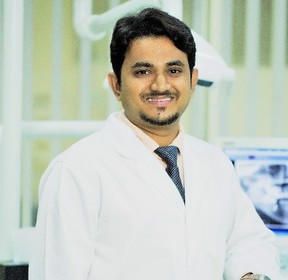
Title: Crestal lift and implant placement: Piezo-surgery and PRP approach
Abstract:
Introduction: Insufficient bone volume is a common problem occurring during the rehabilitation of the edentulous posterior maxilla with implant supported prostheses. The bone available for implant placement may be limited by the presence of the maxillary sinus together with loss of alveolar bone height and it may be increased by augmentation.
Case Description: This case report presents the rehabilitation of the right maxillary molar region using crestal lift followed by immediate placement by using Piezo‐surgery. It helps in reducing the treatment time and increases the patient comfort. Recently, several clinical studies have been performed to evaluate the use of Platelet‐rich Plasma (PRP) in maxillary sinus augmentation.
Discussion: Aim of this case report is to evaluate surgical procedure of sinus lifting associated with PRP use and Piezo‐surgical technique to elevate schneiderian membrane before implant positioning and intrasinusal bone augmentation procedures.
Conclusion/Clinical Significance: Our conclusion is that piezo‐surgery and platelet rich plasma can make sinus lift procedure safer with a slightly faster recovery time. However, it remains a good alternative (worldwide recognized by results) to other procedure only for skilled Practitioner if performed after scheduling a seriously therapeutic programme. Inclusion criteria, procedural steps and healing time must be strictly observed. Overall, results encourage us to follow chosen scheme for the future.
Biography:
Srikanth Narkedamalli is a trained general dentist with 11 years experience in Implant Dentistry. Dr. Srikanth is an expert in Implantology and Digital smile design. He is certified Implantologist from Department of Health, Abu Dhabi. Dr. Srikanth’s expertise includes, but is not limited to nonsurgical/surgical extractions, Implant placement and restoration, bone grafts, direct and indirect sinus lifts, crowns, bridges and general oral maintenance. Dr. Srikanth attended Dr. NTR University, School of Dental Medicine in India and received Gold medal in the final year of BDS for being topper of the institute. He also received an Advanced Education in Implant Dentistry certificate Maxicourse from American Academy of Implant Dentistry. He is a Fellow of the International Congress of Oral Implantologists (Germany) and Fellow of Indian society of oral Implantologists. He’s a Member of American Dental Association, Member of AAID and has delivered lecture and case presentation on Implants at San Francisco, California USA.
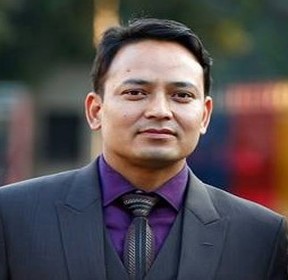
Sajeev Shrestha
BP Koirala Institute of Health Sciences NepalTitle: Sajeev Shrestha
Abstract:
Background: Non-surgical periodontal therapy (NSPT) and surgical (OFD) procedures result in the apical shift of gingival marginal position (GMP) leading to aesthetic and sensitivity problems. Gingival biotype (Gb) is one of the factors that influences outcomes of periodontal treatment. To date, it is unclear as to how much change in GMP occurs in either thick (TK) or thin (TN) Gb after periodontal therapies. The objective of the present randomized controlled trial was to determine and compare the changes in GMP in TK and TN Gb after NSPT and OFD.
Materials and Methods: A total of 52 healthy patients with PPD ≥5-7mm of were included in the present study. The gingival thickness was measured by the transgingival probing technique, and categorized into two groups: thin (TN) < 1mm and (TK) > 1mm. The procedures are randomized based on computer generated random number. Half of the patients underwent NSPT and half in OFD in both TK and TN Gb patients. The GMP was measured in mesiobuccal (MB), mid-buccal (Mid B) and distobuccal (DB) sites at baseline, 1, 3, and 6 months. The periodontal pocket depth (PPD), and clinical attachment level (CAL) were measured at baseline, 3, and 6 months. Independent sample t-test was used for inter group comparisons and paired t-test was for intra group comparisons.
Result: The mean difference of GMP in mid buccal site between NSPT-TK and NSPT-TN group from baseline to 1 month was 0.22 (p<0.05) whereas the mean difference of GMP in mid buccal site between OFD-TK and OFD-TN was 0.15 (p<0.05). The mean difference of GMP in mid buccal site between NSPT and OFD from base line to one month was 0.18 (p<0.05).
Conclusion: The apical shift of gingival margin position was highly significant from baseline to 1, 3, and 6 months in both thick and thin gingival biotype for both NSPT and OFD groups.
Biography:
Sajeev Shrestha is Periodontist by profession. Currently, he is Associate Professor in department of Periodontology and Oral Implantology at BP Koirala Institute of Health Sciences, Dharan, Sunsari, Nepal. He did Master of Dental Surgery (MDS) in Periodontology and Oral Implantology from BP Koirala Institute of Health Sciences in 2014. He has a keen interest on serving a community by providing oral hygiene instructions and dental camp in rural part of the country.

Mahmoud Badr
Future University in Egypt EgyptTitle: The Effect of mechanical instrumentation on dentin surface
Abstract:
Introduction: Preparation and disinfection of the root canal aims to remove organic and inorganic tissue from within the root canal, reduce the number of microorganisms, neutralize endotoxins inside the dentin, and prepare the root canal for proper obturation. These aims can be achieved in many cases to a degree that promises a high chance of success through a combination of mechanical preparation and chemical disinfection.
Results and Conclusions: Preparation and disinfection both physically and chemically act on the lumen of the root canal itself, trying to remove as much infected material as possible, but also act on the surrounding dentin and all of its components including the dentinal tubules.
Biography:
Mahmoud Badr has completed his Masters degree and PhD from Ain Shams University, Egypt. He is the director of basic and advanced endodontic courses in Arab Society for continuous dental education in Egypt. Also, the Clinical supervisor of Endodontics, Restorative master program of Dundee University in Egypt. He is the director of “The Know How in Endodontics” course that is held 3 times per year for one month and sponsored by Dentsply. He is the Owner of The Dental Lounge, prestigious dental center, Cairo, Egypt.

Mahmoud Badr
Future University in Egypt EgyptTitle: Bioceramics as an innovative savior for perforation repair
Abstract:
Introduction: Preparation and disinfection of the root canal aims to remove organic and inorganic tissue from within the root canal, reduce the number of microorganisms, neutralize endotoxins inside the dentin, and prepare the root canal for proper obturation. These aims can be achieved in many cases to a degree that promises a high chance of success through a combination of mechanical preparation and chemical disinfection.
Results and Conclusions: Preparation and disinfection both physically and chemically act on the lumen of the root canal itself, trying to remove as much infected material as possible, but also act on the surrounding dentin and all of its components including the dentinal tubules.
Biography:
Mahmoud Badr has completed his Masters degree and PhD from Ain Shams University, Egypt. He is the director of basic and advanced endodontic courses in Arab Society for continuous dental education in Egypt. Also, the Clinical supervisor of Endodontics, Restorative master program of Dundee University in Egypt. He is the director of “The Know How in Endodontics” course that is held 3 times per year for one month and sponsored by Dentsply. He is the Owner of The Dental Lounge, prestigious dental center, Cairo, Egypt.
Keynote Forum
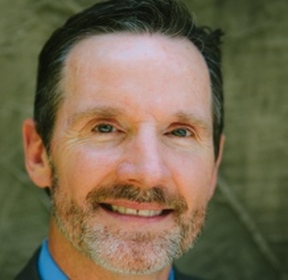
Title: Dentin Graft, “The Gold Standard” Autogenous Graft
Abstract:
Background Research
Schmidt-Schultz1 and Schultz2, Aug. 2005: For the first time we have extracted, solubilized and identified growth factors and bone morphogenetic protein from archaeological compact human bone and tooth dentin dating from the late pre-ceramic pottery Neolithic and the early Middle Ages. Murata, et al. Nov. 14, 2011: Human dentin autograft was reported in 2003 as a first clinical case while human bone autograft was done in 1820. Kim, et al, April 2010: We developed a novel bone grafting material that incorporates autogenous teeth that contains organic and inorganic mineral components and is prepared from autogenous grafting material, thus eliminating the risk of an immune reaction that may lead to rejection.
Intech 2013, Ch 16, Young-Kyun Kim et al : Autogenous bone is the most ideal since it is capable of osteogenesis, osteoinduction, and osteoconduction. Its advantage is the rapid healing time without immune rejection. Dentin has inorganic and organic components that are very similar to those of human bone. Dentin also contains bone morphogenetic proteins (BMP), which promote the differentiation of mesenchymal stem cells into chondrocytes and consequently enhance bone formation. Itzhak Binderman , et al 2014:
Conclusion: Autogenous mineralized dentin particulate grafted immediately after extractions should be considered as the gold standard for socket preservation, bone augmentation in sinuses and bone defects.
Armamentarium and Protocol
The following armamentarium are required to deliver a successful dentin graft: autogenous extracted teeth, high speed drill with 1557 carbide or comparable, Smart Dentin Grinder or comparable, Disposable Grinding Chamber, 0.5 M NaOH with 20% ethanol cleanser, phosphate buffered saline. The Kometabio protocol is utilized: autogenous extracted teeth are debrided of all caries, restorations, and soft tissue and dried; debrided teeth are placed into grinding chamber, grinded and sorted to ideal particle size of 250-1000 micron; particulate is then cleansed and rinsed as to protocol; graft is then utilized with or without PRF for grafting at extraction sites, periodontal defects, and (according to Kim, et al, sinus graft).
Personal Clinical Cases
This clinician has various and numerous clinical cases demonstrating the effectiveness of dentin graft in his private practice.
Summary
This clinician concurs with Binderman, 2014, that “dentin graft should be considered the gold standard for socket preservation and bone augmentation.“
Proposal
This clinician makes a proposal that exodontists and child caretakers enable patients to save their own avulsed, extracted, and shedded deciduous teeth and extracted, avulsed 3rd molars and other teeth for future need at periodontal and extraction site defects.
Disclosure
This clinician is promoting dentin graft based on his own understanding and experience. He is not compensated in any way from KometaBio.
Biography:
Barry E. Goodspeed graduated from Louisiana State University School of Dentistry in 1987 as a member of the C. Edmond Kells Honorary Society and Louisiana State University undergraduate with a B.S. in Zoology in 1983. Dr. Goodspeed runs a private solo general dentistry practice in Birmingham, Alabama, USA with an emphasis on single to full arch implant placement and CAD/CAM restorative. He is currently a member of the Birmingham District Dental Society, the Birmingham Society of Advanced Dentistry, Birmingham Cerec Study Club, Alabama Dental Association, American Dental Association, and Academy of General Dentistry. He has taken various advanced surgical courses in implant placement and restoration, including the Comprehensive Implant Residency Program, Bessemer, Alabama, USA in 2017. Dr. Goodspeed has completed cerecdoctors.com training levels 1-7 and serves as CEREC Mentor and Sirona trainer. Dr. Goodspeed has presented locally and regionally topics including Dentin Graft and CBCT integration with CAD/CAM. Dr. Goodspeed's most relevant technologies to this course include Sirona XG3D Cone Beam CT, KometaBio Smart Dentin Grinder, and PRF Duo Centrifuge. His private solo practice is one of very few in Birmingham, AL, USA with the knowledge and expertise to perform a Dentin Graft.
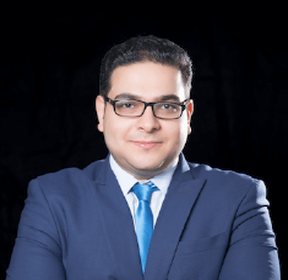
Omar El Bayoumy
International Orthodontic Academy EgyptTitle: The decision-making process in orthodontics: To extract or not to extract?
Abstract:
The major consideration in this important decision relates to management of crowding/ protrusion and the possibility of camouflage for skeletal problems. Crowding/Protrusion. If a patient presents with severe crowding, extremely procumbent maxillary and mandibular incisors, marked facial convexity, and severe lip protrusion, it should be obvious that removing premolars to alleviate crowding and to allow for the retraction of anterior teeth is the best strategy for solving the problem. Unfortunately, most patients do not present such a clear-cut choice. It is for this reason the extraction versus expansion debate has raged in orthodontics for more than 100 years. To better understand the grounds for the debate, we must consider the pros and cons of dental arch expansion.
Biography:
Omar El Bayoumy is the Founder of International Orthodontic Academy (IOA). He has pursued PHD in Orthodontics at Pennsylvania University in USA. He has completed BDS from Mansoura University, Egypt and MSC in Orthodontics at Donau University, Austria.He is a member of International Board of Orthodontics and Implantology, Taiwan and member of European Orthodontic Society.
Speakers
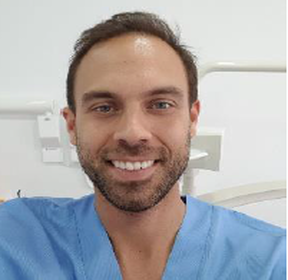
Tiago Gamboa
University of Lisbon PortugalTitle: All-on-4TM Concept: Full-arch rehabilitation with immediate function
Abstract:
The edentulous maxilla's anatomic characteristics make rehabilitation of atrophic jaws with dental implants challenging. In these patients, the residual alveolar bone due to resorption or a mandibular canal can cause problems for the insertion of dental implants, often requiring bone grafts. To avoid grafting procedures and to utilize pre-existing bone in the most effective way, angled implants (tilting of implants) is a well-documented alternative, with no apparent clinically significant difference in success rates compared with axially placed implants. One particular treatment option is marketed as the All-on-4™ concept (Nobel Biocare, Goteborg, Sweden). This treatment concept enables the rehabilitation of a fully edentulous jaw with minimal bone volume, short treatment intervals, lower cost, lower patient morbidity and a better quality of life. A careful patient selection and an experienced surgical and restorative team are essential for successful treatment outcomes.
Biography:
Tiago Gamboa received his M.Sc. Dentistry degree from Dental Medicine School at the University of Lisbon, Portugal (2011) and subsequently his University Diploma from Medicine School at the University Paul Sabatier in Toulouse, France (2013). He completed a program in Oral Rehabilitation and Aesthetics at the European and Implantology Center and European School of Oral Rehabilitation Implantology and Biomaterials in Portugal and Spain (2011-2013). He has 8 years of private practice exclusively in oral and implant surgery and rehabilitation. He worked at the Malo Clinic, recognized worldwide for its know-how and innovation, where he received special training in the All-On-4 technique from Dr. Paulo Malo. He is experienced in full arch rehabilitation with dental implants. Tiago is passionate about his work and highly organized.
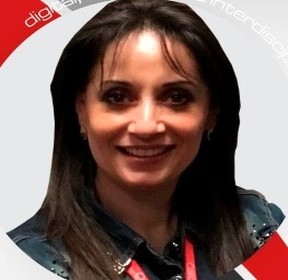
Hanadi Kassab
LebanonTitle: DSD Concept: The Digital Dentistry Revolution
Abstract:
Aim: The aim of this presentation is to define and to present the newest concept in Digital Aesthetic Dentistry “The DSD Concept” followed by the CAD/ CAM system, to illustrate its various components and to treat the different steps of the digital workflow, involving the patient in the Digital Smile Design of his smile, in order to obtain an ideal aesthetic smile which give him the feeling of full satisfaction.
Introduction: The smile is one of the most attractive facial expressions, it is known as a nonverbal parameter of communication expressing joy. An attractive smile is described as an important tool to influence people; it affects the psychosocial well-being of the individual as well as his behaviour, character traits and gives him high self-esteem.
Problem: Patients are mainly unsatisfied due to unpredictable result of the restorations in the traditional dentistry.
Solution: The evolution of Digital Dentistry offers the opportunity to use many technologies such as Intra-Oral Scan, Computer Added Design/Computer Added Manufacture (CAD/CAM) systems and the Digital Smile Design (DSD) concept. These innovations are able to give excellent, accurate and aesthetic results with more comfortable experience for the patient and more efficient team workflow. The DSD concept is a multi-use conceptual dental treatment planning tool that is used in aesthetic dentistry, which allows designing a smile digitally. By following simple steps, we are able to evaluate the different parameters of the teeth. This concept allows strengthening diagnostic vision, improving communication, enhancing predictability throughout the treatment and establishing a multidisciplinary approach for an aesthetic challenge.
Biography:
Hanadi Kassab is the owner of Digital Dental Clinic and Lab in Tripoli, Lebanon. She has completed her BS from Antonin University. She has a Master’s degree in Digital Smile Design and Business Administration (MBA). She is a CAD/CAM Trainer in Dentsply Sirona Co. She is a ceramic and dental material instructor and she holds a Certificate in Dental Photography. She is the member of International DSD Community.

Sara Fikry El Shafei
The British University in Egypt EgyptTitle: Osseointegrated implants versus zirconium mucosal inserts in complete denture patients
Abstract:
Purpose: To evaluate the effect of osseointegrated implants versus mucosal inserts used for retention of complete dentures.
Materials and Methods: Twelve completely edentulous patients were selected for this study and divided into two groups of six. Group I received implant retained maxillary overdentures, while group II received maxillary overdentures retained by muchor zirconium mucosal inserts. Bone changes in both groups were evaluated using cone beam ct at insertion and after six and twelve months.
Results: The results showed that the bone changes produced in mucosal overdenture wearers were greater than those produced in implant overdenture wearers.
Conclusion: Zirconium mucosal inserts caused more bone changes than osseointegrated implants.
Biography:
Sara Fikry El Shafei earned her Bachelor’s Degree in Dentistry from Ain Shams University, Cairo, Egypt in 2003. She then earned her Master’s degree in Removable Prosthodontics in 2012, and went on to earn her PHD in Prosthodontics from Ain Shams University, in 2016. She has been teaching Prosthodontics for 9 years, the last 7 of which were at the British University in Egypt where she currently works as a lecturer of Prosthodontics. She has several research publications under her name, and is highly interested in Dental implants and in Facial Esthetics. As well as Lecturing, Dr Sara also practices Dentistry in private practices, where she’s responsible for the prosthetics and facial esthetics and injectibles work in these clinics.
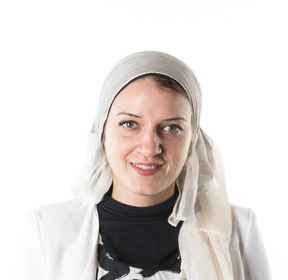
Shereen Nader Elsayed Hussain
The British University in Egypt EgyptTitle: The effect of the PRF and Simvastatin on bone formation and post-surgical inflammation after induction of critical size bone defects in rats tibiae
Abstract:
Aim: This study compares the bone regenerative power of SIM and PRF and the combination added locally on induced bone defect and their effect on inflammatory markers.
Materials and methods: Critical size bone defects was induced in 48 male albino rats of average weight 150–200 g and were divided into 4 groups according to the filling material. Control, PRF, SIM and SIM/PRF group. Each group was subdivided according to the sacrificing period into two subgroups (one and two-months postoperatively). Tibial specimens were evaluated histologically using Hematoxylin and eosin (H&E) stain, serum inflammatory markers (IL-1β, IL-6, IL-10 and TNF-α) 6 days post-surgery using ELISA technique.
Results: Bone specimens of the SIM group and the combination showed well observed darkly stained areas of matured bone compared to the other groups especially two-month postoperatively, the SIM/PRF group showed matured bone trabeculae surrounding bone marrow spaces which appeared densely stained with normal osteocytes lacunae. Resting and reversal lines were obviously detected in the combination group only, denoting high bone remodeling activity in this group. PRF and SIM decreased significantly the pro-inflammatory IL-1β serum levels compared to the control group, SIM loaded on PRF showed the highest statistical significant decrease in IL-1β serum concentration (P<0.001). IL-6 and TNF-α serum levels didn’t differ significantly between the control and PRF group, but showed statistical significant decrease in the SIM and SIM//PRF groups. In contrast PRF, SIM and SIM/PRF significantly increased IL-10 serum levels compared to the control group with the highest significant increase in the SIM/PRF group (P<0.001).
Conclusion: Comparing SIM with PRF each as a sole filling material in the bone defect, SIM showed more enhanced bone regeneration and more powerful anti-inflammatory effect, while the combination has proven to cause the most significant bone formation but without significant effect on inflammation.
Biography:
Shereen Nader Raafat currently working in the department of pharmacology and toxicology (Pharmaceutical Sciences), Faculty of Dentistry, The British University in Egypt (BUE). She has done her graduation from the Faculty of Pharmacy, Ain Shams University. First she had Masters Degree in Clinical Pharmacy from Ain Shams University with the opportunity to implement clinical pharmacy practice where she first worked in The National Institute of Urology and Nephrology, where she aimed to improve general patient’s health and pharmacy practice. Since joining academia, she has researched extensively problems related to the orthopedic field. She has attended various national and international conferences and workshops on experimental animals and tissue culture. Recently she had her PhD Degree in the Pharmacology Department, Cairo University. Recent research has been published in The Journal of Bone which had a powerful impact not only on the field of orthopaedics but also the field of dentistry.
Workshop

Omar El Bayoumy
International Orthodontic Academy EgyptTitle: The Effect of TADs (mini-implants) on orthodontic science
Abstract:
The major consideration in this important decision relates to management of crowding/ protrusion and the possibility of camouflage for skeletal problems. Crowding/Protrusion. If a patient presents with severe crowding, extremely procumbent maxillary and mandibular incisors, marked facial convexity, and severe lip protrusion, it should be obvious that removing premolars to alleviate crowding and to allow for the retraction of anterior teeth is the best strategy for solving the problem. Unfortunately, most patients do not present such a clear-cut choice. It is for this reason the extraction versus expansion debate has raged in orthodontics for more than 100 years. To better understand the grounds for the debate, we must consider the pros and cons of dental arch expansion.
Biography:
Omar El Bayoumy is the Founder of International Orthodontic Academy (IOA). He has pursued PHD in Orthodontics at Pennsylvania University in USA. He has completed BDS from Mansoura University, Egypt and MSC in Orthodontics at Donau University, Austria.He is a member of International Board of Orthodontics and Implantology, Taiwan and member of European Orthodontic Society.

